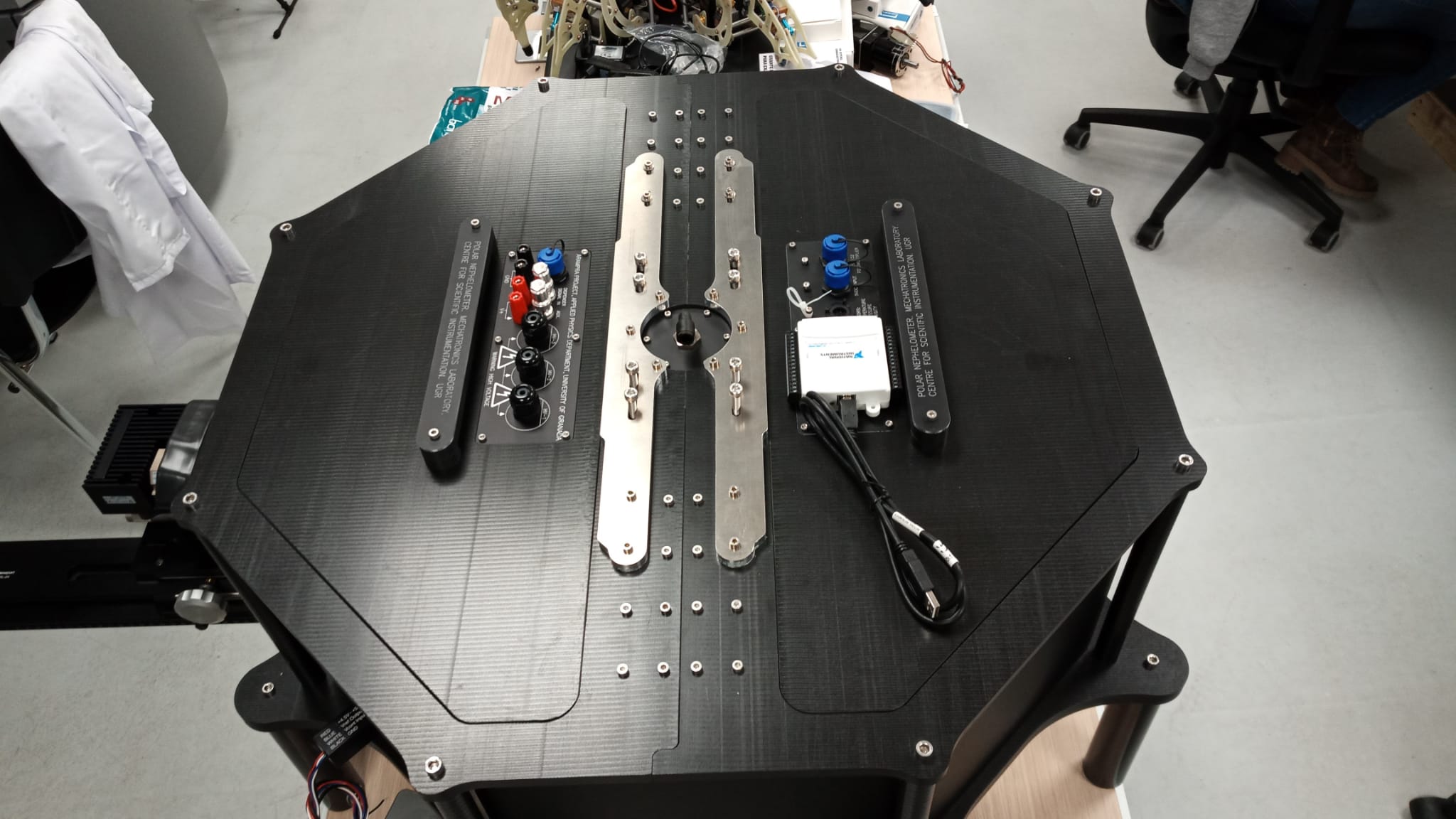The laboratory consists of a Paul Electrodynamic Trap, for confinement and suspension of individual particles (102 - 104 nm). The trap is enclosed in a 15cm3 chamber, where changes in temperature and relative humidity are applied, and the effects and transformation processes that occur in the individual particles are recorded. The injection of particles in the chamber is done with a “MJ-AT-01-020 Low Temperature Microdispensing Device” and a control box “CT-M5-01-JetDrive V”. The hygroscopicity is controlled with a “MKS 946 Vacuum system controller” and two units of “Mass Flow controller GE50A 500 sccm N2”. A software programmed with LabVIEW performs mixtures concentrations.

The particles within the chamber are irradiated and the subsequent elastic and inelastic scattering that they produce can be measured (phase function and Raman spectroscopy, respectively), and key properties of the aerosol can be derived. For measuring phase functions, the laboratory uses an adapted polar nephelometer that allows measuring with an angular range of 5-175º thanks to a high precision Newport rotor engine (RGV 100BL, 0.00001º angular resolution). For the illumination, the laboratory uses very stable laser sources: OXXIUS 532 nm and 100 mW, láser Quantum gem 473 nm and 100 mW, and a multispectral laser Vortran, 405, 488, 532 and 642 nm. The scattered radiation is collected by a photomultiplier tube Hamamatsu H8443 mounted on the rotor engine.
The equipment is completed with an anti vibration optical table with pneumatic isolators to dampen vibration, producing an effective isolation from 0.7Hz to 1 kHz. Two resonant optical cavities work in parallel on the table. They consist of two sources ‘single mode frequency’: first, a 405nm diode laser LYNX (Sacher Lasertechnik), and second, a 532nm laser Laser Quantum (torus model). The two cavities allow measuring extinction cross sections simultaneously in those two wavelengths for the same particle confined in a Paul trap and subjected to changes in temperature and relative humidity.